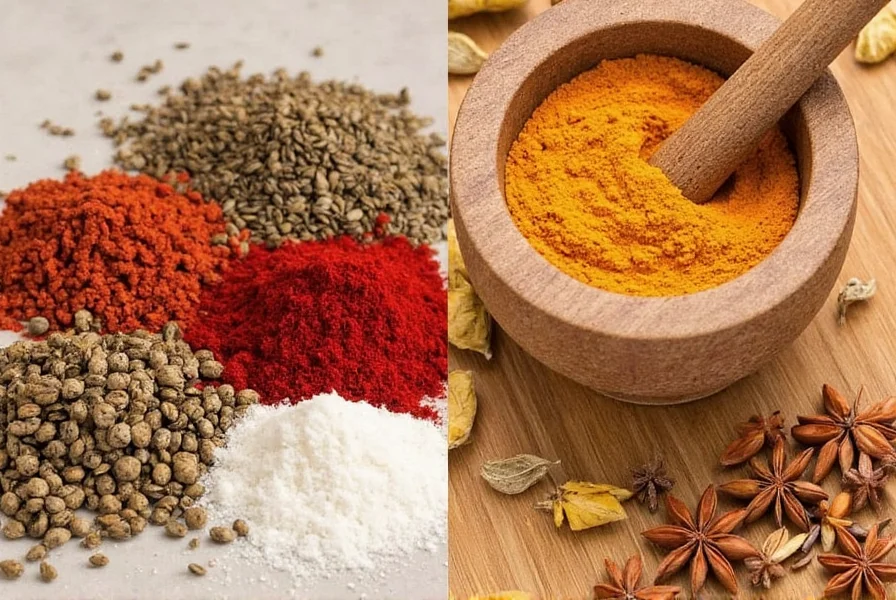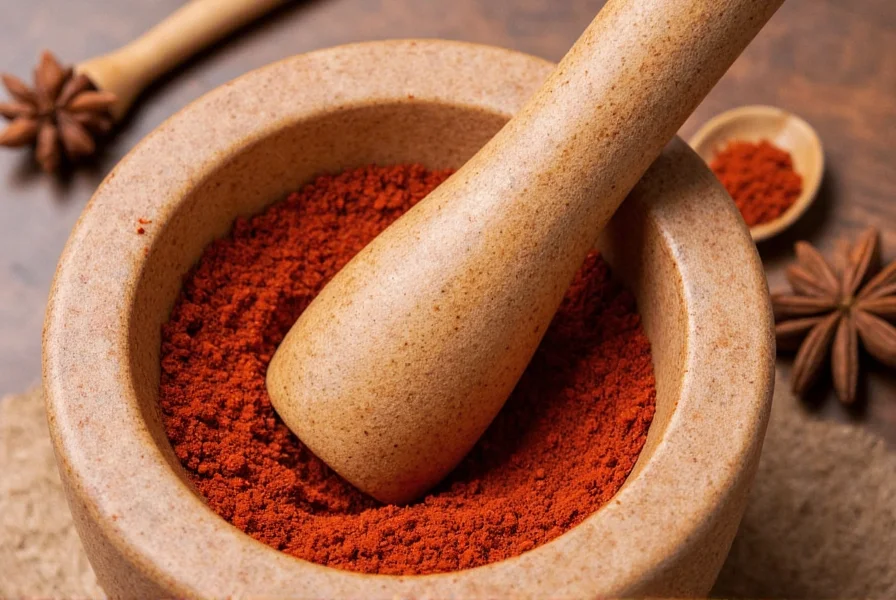If you've ever reached for your mortar and pestle only to find it missing or broken, you're not alone. Many home cooks face this dilemma when trying to prepare authentic dishes that require freshly ground spices. The good news is you don't need specialized equipment to achieve that vibrant, aromatic flavor profile that elevates your cooking. Freshly ground spices contain more essential oils and complex flavors than their pre-ground counterparts, making the effort worthwhile for any serious cook.
Using a Dedicated Coffee Grinder
One of the most efficient alternatives to mortar and pestle is a dedicated coffee grinder. While it might seem unconventional, this small appliance works exceptionally well for dry spices. The key is to use a grinder exclusively for spices to avoid flavor transfer from coffee beans.
Start with completely dry spices—moisture can damage the grinder and create clumps. Add small batches (1-2 tablespoons) to prevent overloading. Pulse in short bursts rather than continuous grinding to avoid generating too much heat, which can degrade delicate essential oils. After grinding, immediately transfer your spices to an airtight container to preserve freshness.

Blender or Food Processor Method
Your standard blender or food processor can handle spice grinding with some technique adjustments. This method works best for larger quantities of harder spices like cumin seeds, coriander, or peppercorns.
Place your spices in the container and use the pulse function rather than continuous blending. Stop frequently to scrape down the sides and redistribute the spices for even grinding. For finer results, add a small amount of uncooked rice to the mixture—it helps create friction and absorbs excess oils. Remember to clean your blender thoroughly afterward to prevent flavor contamination in future uses.
Rolling Pin Technique
When power tools aren't available, the rolling pin method offers a surprisingly effective solution. Place your spices in a sturdy zip-top plastic bag or between two sheets of parchment paper. Seal the bag completely to prevent spills.
Using firm, even pressure, roll the pin over the spices in a back-and-forth motion. Focus on applying consistent pressure rather than excessive force, which can send spices flying. This method works particularly well for cardamom pods, cinnamon sticks, and star anise. For best results, work with small quantities at a time to ensure even grinding.
Knife Crushing Method
For small amounts of spices, your chef's knife becomes an invaluable tool. Place whole spices on a cutting board and lay the flat side of your knife blade over them. Apply firm downward pressure while gently rocking the knife.
This technique works exceptionally well for garlic cloves, ginger, and small quantities of spices like cloves or allspice berries. The pressure releases essential oils while creating a fine paste-like consistency. For harder spices, you may need to repeat the process several times to achieve your desired texture.
Hammer and Plastic Bag Approach
When dealing with particularly hard spices like nutmeg or whole cinnamon sticks, the hammer method delivers impressive results. Place your spices in a heavy-duty zip-top bag and remove as much air as possible before sealing.
Lay the bag on a solid surface like a cutting board or countertop. Using the flat side of a hammer or meat mallet, apply firm, controlled taps across the entire surface of the bag. Work systematically from one side to the other to ensure even grinding. This method preserves more essential oils than pre-ground alternatives while requiring minimal equipment.
Fork Grinding Technique
For soft spices or small quantities, the humble fork offers surprising versatility. Place your spices on a cutting board and use the tines to press and twist against the surface.
This method works particularly well for cardamom seeds removed from their pods or for creating a fine paste with garlic and salt. The twisting motion helps release essential oils while controlling the texture. While not suitable for large quantities, this technique provides excellent control for delicate spice preparations.
| Method | Best For | Texture Achieved | Time Required |
|---|---|---|---|
| Coffee Grinder | Medium to large batches | Fine, consistent powder | 1-2 minutes |
| Blender/Food Processor | Hard spices in quantity | Moderately fine | 2-3 minutes |
| Rolling Pin | Small to medium batches | Semi-fine to coarse | 3-5 minutes |
| Knife Crushing | Very small quantities | Paste-like consistency | 1-2 minutes |
| Hammer Method | Extremely hard spices | Coarse to medium | 2-4 minutes |
Tips for Optimal Results
Regardless of which method you choose for grinding spices without mortar and pestle, certain principles apply to maximize flavor and shelf life. Always start with whole, high-quality spices—look for vibrant color and strong aroma. Store whole spices in airtight containers away from light and heat to preserve their essential oils until you're ready to grind them.
Grind spices in small batches to maintain freshness, as ground spices lose potency within weeks. For the most intense flavor, toast whole spices in a dry skillet over medium heat for 1-2 minutes before grinding—this enhances their natural oils and creates more complex flavors. Allow toasted spices to cool completely before grinding to prevent steam from forming, which can cause clumping.
When using electrical appliances, work in short bursts to prevent overheating, which can degrade delicate flavor compounds. Immediately transfer freshly ground spices to dark glass containers with tight-fitting lids to protect them from light and moisture. Properly stored, homemade spice blends can maintain their potency for 4-6 weeks—significantly longer than store-bought ground spices.
Addressing Common Challenges
Many home cooks encounter issues when grinding spices without mortar and pestle. Clumping often occurs with oily spices like nutmeg or cinnamon—adding a few grains of uncooked rice to your grinding process absorbs excess oils and creates a finer powder. For spices that tend to fly around during grinding, work with smaller quantities and ensure your container is properly sealed.
If you're concerned about cross-contamination between different spices, dedicate specific tools for particular spice families—use one coffee grinder for sweet spices like cinnamon and nutmeg, and another for savory spices like cumin and coriander. When using manual methods, wipe surfaces thoroughly with a vinegar solution between different spice types to eliminate residual flavors.
Why Freshly Ground Spices Matter
The difference between freshly ground spices and pre-ground varieties goes beyond mere convenience—it's a fundamental aspect of flavor chemistry. Whole spices retain their essential oils and volatile compounds until the moment of grinding. Once exposed to air, light, and moisture, these compounds begin to degrade, resulting in diminished flavor and aroma.
Professional chefs consistently emphasize that freshly ground spices can transform an ordinary dish into something extraordinary. The vibrant, complex flavors released through proper grinding techniques create depth and nuance that pre-ground spices simply cannot match. This is particularly true for spices like cumin, coriander, and cardamom, where the difference between fresh and stale is immediately noticeable.
Frequently Asked Questions
Can I use the same coffee grinder for both coffee and spices?
No, it's not recommended to use the same grinder for both coffee and spices. Coffee beans leave oils that will permanently flavor your spices, and spice residues will affect your coffee's taste. For best results, dedicate one grinder exclusively for spices and another for coffee to maintain pure flavor profiles.
How fine should I grind different types of spices?
The ideal grind depends on your recipe. For dry rubs, aim for a coarse texture that provides texture contrast. For curries and sauces, a fine powder ensures even distribution. Delicate spices like saffron should be ground to a fine powder, while robust spices like black pepper work well with a medium-coarse grind that releases flavor gradually during cooking.
How long do freshly ground spices stay fresh?
Freshly ground spices maintain peak flavor for 4-6 weeks when stored properly in airtight, dark glass containers away from heat and light. This is significantly longer than store-bought ground spices, which often lose potency within weeks of opening. For best results, grind spices in small batches as needed rather than all at once.
Which spices benefit most from being freshly ground?
Spices with high volatile oil content show the most dramatic improvement when freshly ground. These include cardamom, cumin, coriander, nutmeg, and black pepper. Whole spices like cinnamon sticks and star anise also benefit significantly, as their complex flavor compounds remain intact until grinding.
Can I grind wet ingredients like garlic with these methods?
Most dry grinding methods aren't suitable for wet ingredients. For garlic, ginger, or other moist items, use the knife crushing technique or a dedicated mortar. If using electrical appliances, add a small amount of salt first to absorb moisture and create friction. Always clean equipment thoroughly after processing wet ingredients to prevent spoilage and flavor transfer.











 浙公网安备
33010002000092号
浙公网安备
33010002000092号 浙B2-20120091-4
浙B2-20120091-4